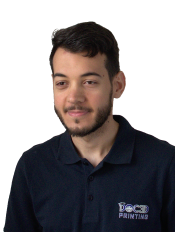ESR02 - Giovanni Urruth Bruno
|
|
Nationality: |
Brazilian |
|
Host Institution: |
Marion Technologies (France) | |
|
Supervisor: |
David Grossin (INPT) | |
|
Subject: |
Tailored Powders for additive manufacturing |
Background:
Giovanni Urruth Bruno is from Porto Alegre (Brazil). He started his academic career at the Federal University of Rio Grande do Sul (UFRGS), when in 2010 he engaged into the Materials Engineering path. During the next 5 years of study, he had the opportunity of joining very interesting research groups for two scientific scholarships:
- The first one, to study high hardness nanocomposites and how to synthetize them by high energy milling.
- And the second one, when he assisted the development of robotic welding techniques for special steels, in a partnership between Petrobras and the university.
Also, during this period, he had the opportunity of participating of an international exchange program at Polytech Montpellier (France).
After graduating as a Materials Engineer in 2015, he started his own research project by being awarded with a two years scholarship at UFRGS. This work was built into a Master’s dissertation about the degradation of organic coatings under UV exposure. Meanwhile, during this same period, he attended a two years postgraduation program to specialize himself in Work Safety Engineering. After finishing these last two steps, in late 2017, he started leading a team to manage the implementation of more than 2.500 fire prevention and protection plans, since its budgets previsions until the final executive projects.
Finally, in 2018, he was selected to be part of DOC-3D-PRINTING and came back to France for this next challenge.
Presentation of the individual project:
Ceramics for additive manufacturing are of interest in medical and aerospace fields. The aim of his project is to produce ceramic powders suitable for additive manufacturing techniques such as Stereolithography (SLA) and Selective Laser Melting/Sintering (SLM/S).
SLM/S and SLA are promising additive manufacturing techniques allowing the production of functional complex net-shaped and fully dense parts. The difficulty is to elaborate powders which present properties suitable to these different processes, simultaneously. Alumina, zirconia, HAP, TCP, mixed alumina-zirconia powders are good candidates. The challenge here is to produce nano-structured agglomerates in order to increase the surface and thus the reactivity required for effective sintering (submicronic particles) while keeping suitable flowability and dispersing properties for handling facilities, which is preferably achieved by spherical agglomerated particles of a few tens of microns.
The main objectives of this work are to understand the relationships between the powder properties and the synthesis process parameters. The tailored nano-structured agglomerates are produced through a multistep process based on soft chemistry, calcination and spray-drying steps, arranged in this order or differently. The effect of the operational parameters on the chemical and physical properties of the powder will be characterized as well as their sinterability. The powders will be tested on 3D-printing devices within the consortium. Then powders will have to be adapted (grain size, morphology, flowability…) after the different trials, optimized, to perfectly suit the requirements of the 3D-printing devices and the obtained pieces.


